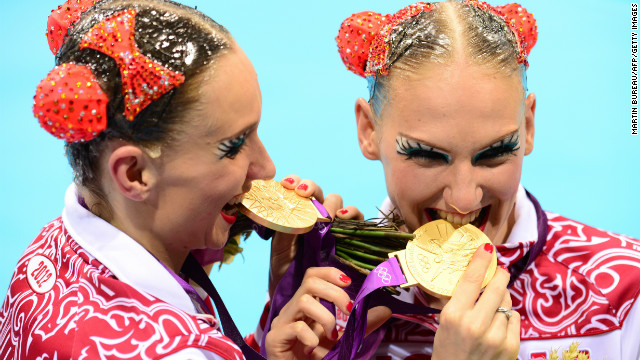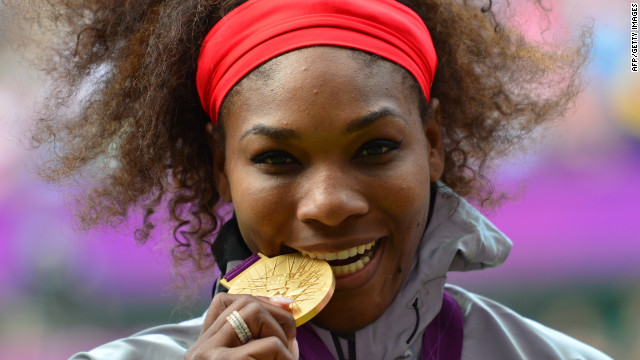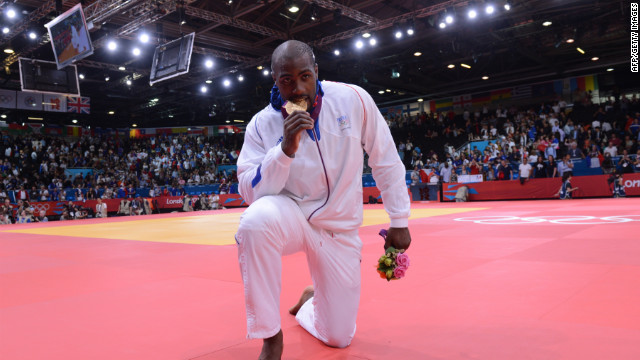
It's a familiar pose by now: Fresh-faced Olympian grins while pretending to take a bite from the hard-won gold medal hanging around his neck.
But why do athletes feign chomping on their prized medallions, anyway?
Most likely to satisfy the pose-hungry media, says David Wallechinsky, president of the International Society of Olympic Historians. There are only so many things to do with a medal, and the excited champions are usually appeasing requests from the gallery of Olympic photographers when they bite down on their booty.
"It's become an obsession with the photographers," says Wallechinsky, co-author of "The Complete Book of the Olympics." "I think they look at it as an iconic shot, as something that you can probably sell. I don't think it's something the athletes would probably do on their own."
He's seeing the practice more this year than ever before, especially among swimmers -- though he has no idea why.
Photogs have caught star gymnast Gabby Douglas, track champ Sanya Richards-Ross and swimmer Ryan Lochte giving their medals some tooth. Lochte's shots sometimes feature the added bonus of a jewel-encrusted "grill."
It's not just an Olympic phenomenon, though. Spanish tennis player Rafael Nadal famously gnaws his trophies when he wins.
Historically, the practice of biting into metal seems to have its roots in money counterfeiting. Money handlers would bite down on coins to test their authenticity, said David W. Lange of Numismatic Guaranty Corporation. Gold is a relatively soft metal and would show wear when distressed.
Since coins have not contained precious metals for about the past 50 years, it would be silly to try munching on them nowadays.
So how much of an Olympic gold medal is actually gold? It varies by the Games.
This year, the gold medal consists of 1.34%, or about 6 grams, of gold. The remainder is 93% silver and 6% copper.
The amount of gold used to make a medal shrunk after each of the two World Wars, according to Olympic medal collector and expert Jim Greensfelder. Gold medals were made of solid gold at three Olympics -- in 1904, 1908 and 1912 -- but the medals themselves were smaller.





0 comments:
Post a Comment